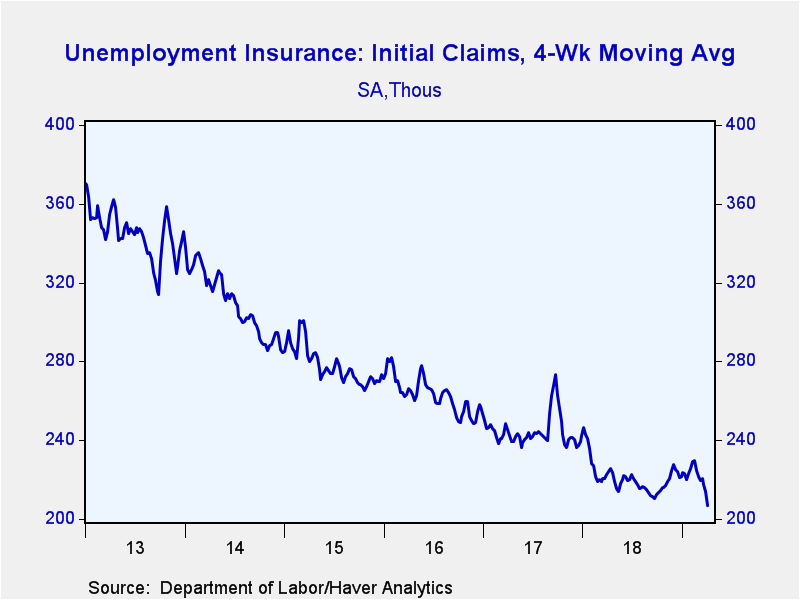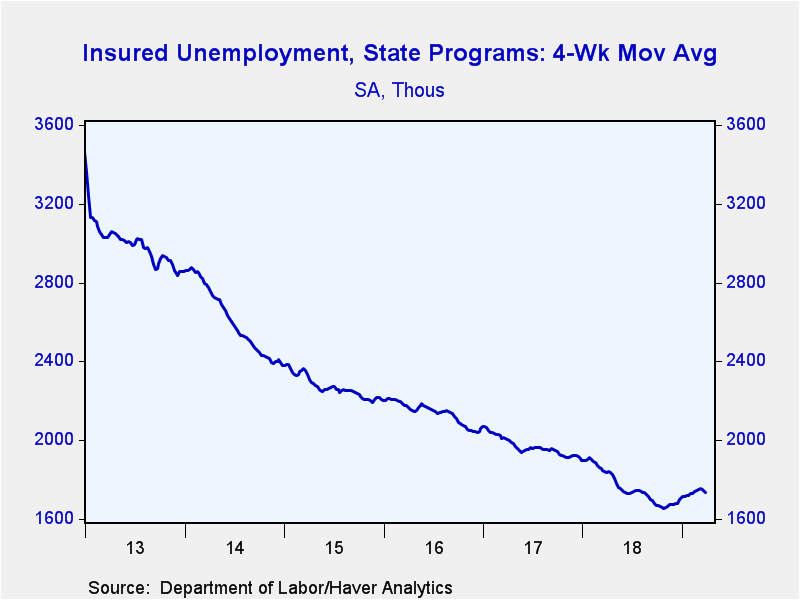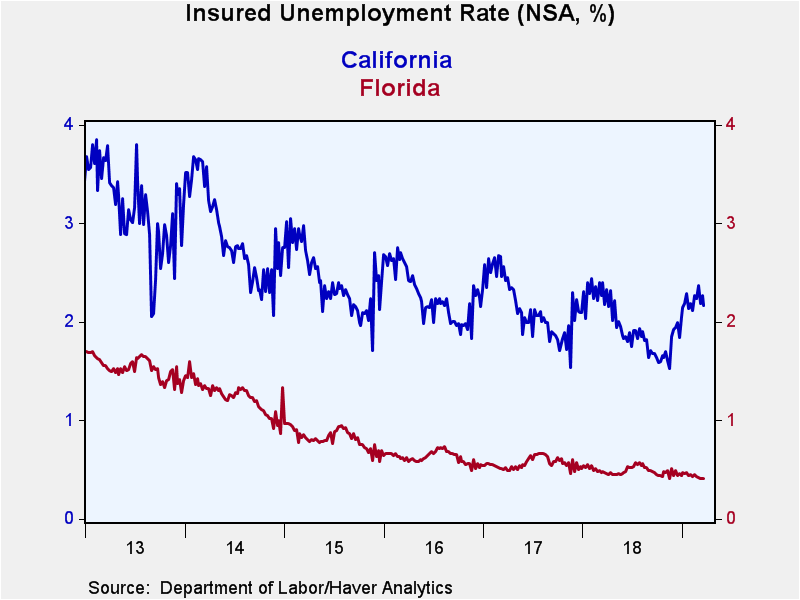 Global| Apr 11 2019
Global| Apr 11 2019U.S. Initial Claims for Unemployment Insurance Decline to 50-Year Low
Summary
Initial claims for unemployment insurance decreased to 196,000 (-13.7% year-on-year) during the week ended April 6 from a slightly upwardly-revised 204,000 in the previous week. This is the lowest level of claims since October 1969. [...]
Initial claims for unemployment insurance decreased to 196,000 (-13.7% year-on-year) during the week ended April 6 from a slightly upwardly-revised 204,000 in the previous week. This is the lowest level of claims since October 1969. The Action Economics Forecast Survey expected 211,000 claims. The four-week moving average of initial claims declined to 207,000, also a 50-year low. As a share of the labor force, jobless claims are at record low levels. While these statistics suggest a healthy labor market, they also are indicative of a less positive trend, a structural decline in job turnover which accompanies a less dynamic economy.
Continuing claims for unemployment insurance declined 13,000 to 1.713 million (-7.5% y/y) in the week ending March 30, from the upwardly-revised 1.726 million in the prior week. The four-week moving average of claimants decreased to 1.735 million.
The insured rate of unemployment remained at the record low 1.2%, where it has been since May 2018. Data on the insured unemployment rate go back to 1971.
Insured rates of unemployment vary widely by state. During the week ending March 23, the lowest rates were in Florida (0.41%), North Carolina (0.46%), Tennessee (0.55%), Georgia (0.56%) and Virginia (0.56%). The highest rates were in Montana (2.22%), Rhode Island (2.35%), Connecticut (2.37%), New Jersey (2.51%), and Alaska (2.78%). Among the other largest states by population not mentioned above the rate was 2.17% in California, 0.95% in Texas, 1.60% in New York and 2.04% in Pennsylvania. These state data are not seasonally adjusted.
Data on weekly unemployment claims going back to 1967 are contained in Haver's WEEKLY database, and they are summarized monthly in USECON. Data for individual states are in REGIONW. The expectations figure is from the Action Economics Forecast Survey, carried in the AS1REPNA database.
| Unemployment Insurance (SA, 000s) | 04/06/19 | 03/30/19 | 03/23/19 | Y/Y % | 2018 | 2017 | 2016 |
|---|---|---|---|---|---|---|---|
| Initial Claims | 196 | 204 | 212 | -13.7 | 220 | 244 | 262 |
| Continuing Claims | -- | 1,713 | 1,726 | -7.5 | 1,756 | 1,961 | 2,135 |
| Insured Unemployment Rate (%) | -- | 1.2 | 1.2 |
1.3 |
1.2 | 1.4 | 1.6 |
Gerald D. Cohen
AuthorMore in Author Profile »Gerald Cohen provides strategic vision and leadership of the translational economic research and policy initiatives at the Kenan Institute of Private Enterprise.
He has worked in both the public and private sectors focusing on the intersection between financial markets and economic fundamentals. He was a Senior Economist at Haver Analytics from January 2019 to February 2021. During the Obama Administration Gerald was Deputy Assistant Secretary for Macroeconomic Analysis at the U.S. Department of Treasury where he helped formulate and evaluate the impact of policy proposals on the U.S. economy. Prior to Treasury, he co-managed a global macro fund at Ziff Brothers Investments.
Gerald holds a bachelor’s of science from the Massachusetts Institute of Technology and a Ph.D. in Economics from Harvard University and is a contributing author to 30-Second Money as well as a co-author of Political Cycles and the Macroeconomy.









